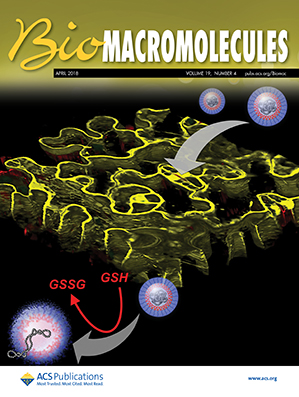面向可再生水处理:高效、可持续的稻秆阳离子纤维素纳米纤维絮凝剂。
IF 5.4
2区 化学
Q1 BIOCHEMISTRY & MOLECULAR BIOLOGY
引用次数: 0
摘要
絮凝剂对于去除废水中的污染物至关重要,但传统的有机和无机絮凝剂往往缺乏可再生性,并存在二次污染的风险。以水稻秸秆为原料制备阳离子纤维素纳米纤维(CCNF)絮凝剂,该絮凝剂具有良好的絮凝性能、可持续性和环境相容性。对纤维素纳米纤维进行提取,并在温和条件下进行阳离子改性。优化后的改性增强了阳离子取代,最大SS去除率为98.9%。CCNF在酸性和碱性条件下均保持稳定的性能,在去除纳米级SS和处理实际农业废水方面尤其有效。此外,阳离子改性并没有显著改变纤维素的生物降解性,在土壤中放置180天后,CCNF的重量下降与未改性的CNF相似。CCNF-3的成本估计约为1.13元/g,略高于常规絮凝剂,但具有可观的环境效益。本文章由计算机程序翻译,如有差异,请以英文原文为准。
Toward Renewable Water Treatments: Efficient and Sustainable Cationic Cellulose Nanofiber Flocculants Derived from Rice Straw
Flocculants are essential for removing pollutants from wastewater, yet conventional organic and inorganic types often lack renewability and pose risks of secondary pollution. In this study, a cationic cellulose nanofiber (CCNF) flocculant was developed from rice straw, offering enhanced flocculation performance, sustainability, and environmental compatibility. The cellulose nanofiber was extracted and cationically modified under mild conditions. Optimized modification enhanced cationic substitution, yielding a maximum SS removal of 98.9%. CCNF maintained stable performance under both acidic and alkaline conditions and was particularly effective in removing nanoscale SS and treating actual agricultural wastewater. Moreover, cationic modification did not significantly alter the biodegradability of cellulose, with CCNF showing a weight loss similar to that of unmodified CNF after 180 days in soil. The estimated cost of CCNF-3 was approximately 1.13 yuan/g, slightly higher than conventional flocculants, but with considerable environmental benefits.
- Download: Download high-res image (177KB)
- Download: Download full-size image
求助全文
通过发布文献求助,成功后即可免费获取论文全文。
去求助
来源期刊

Biomacromolecules
化学-高分子科学
CiteScore
10.60
自引率
4.80%
发文量
417
审稿时长
1.6 months
期刊介绍:
Biomacromolecules is a leading forum for the dissemination of cutting-edge research at the interface of polymer science and biology. Submissions to Biomacromolecules should contain strong elements of innovation in terms of macromolecular design, synthesis and characterization, or in the application of polymer materials to biology and medicine.
Topics covered by Biomacromolecules include, but are not exclusively limited to: sustainable polymers, polymers based on natural and renewable resources, degradable polymers, polymer conjugates, polymeric drugs, polymers in biocatalysis, biomacromolecular assembly, biomimetic polymers, polymer-biomineral hybrids, biomimetic-polymer processing, polymer recycling, bioactive polymer surfaces, original polymer design for biomedical applications such as immunotherapy, drug delivery, gene delivery, antimicrobial applications, diagnostic imaging and biosensing, polymers in tissue engineering and regenerative medicine, polymeric scaffolds and hydrogels for cell culture and delivery.
 求助内容:
求助内容: 应助结果提醒方式:
应助结果提醒方式:


